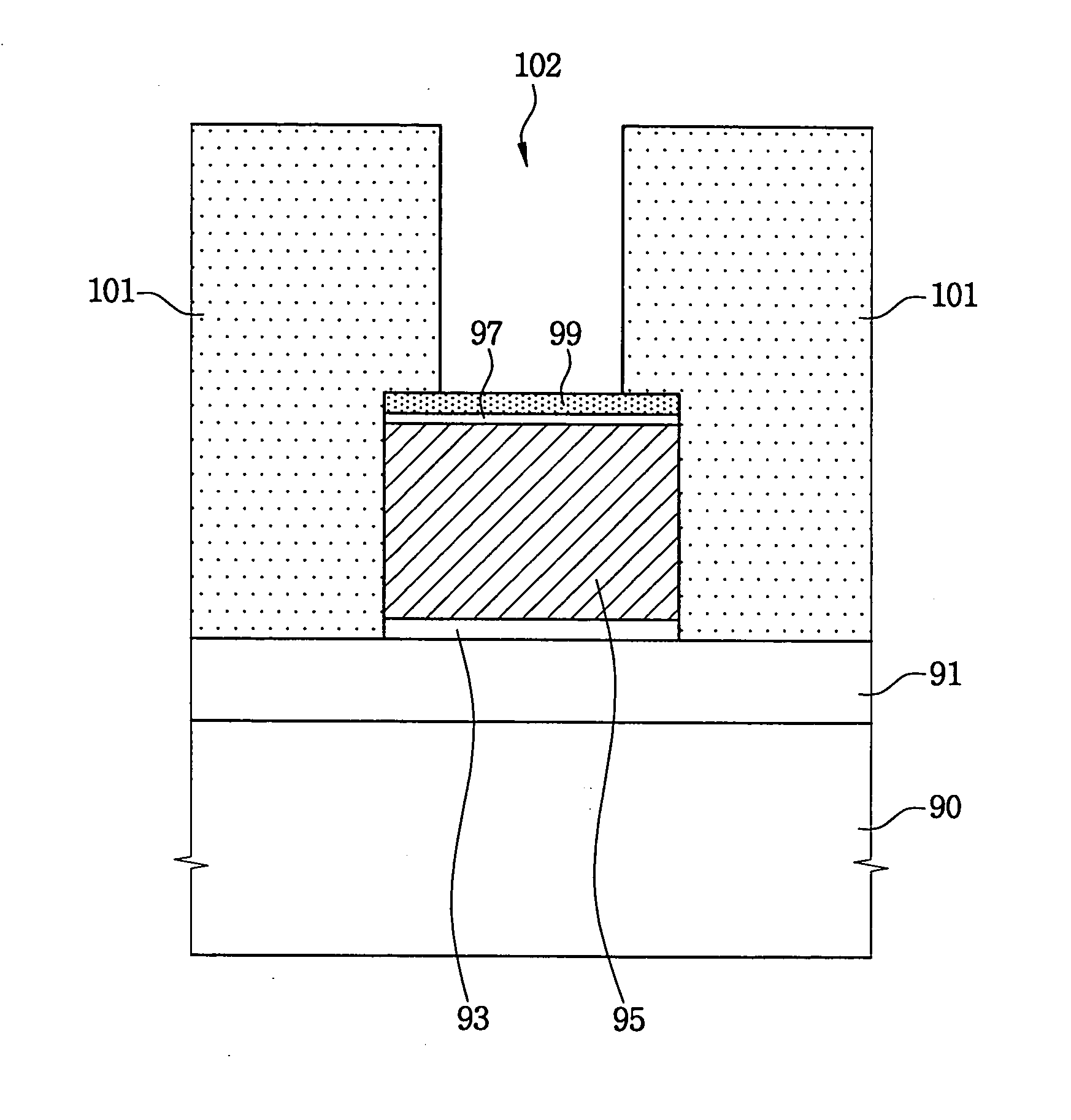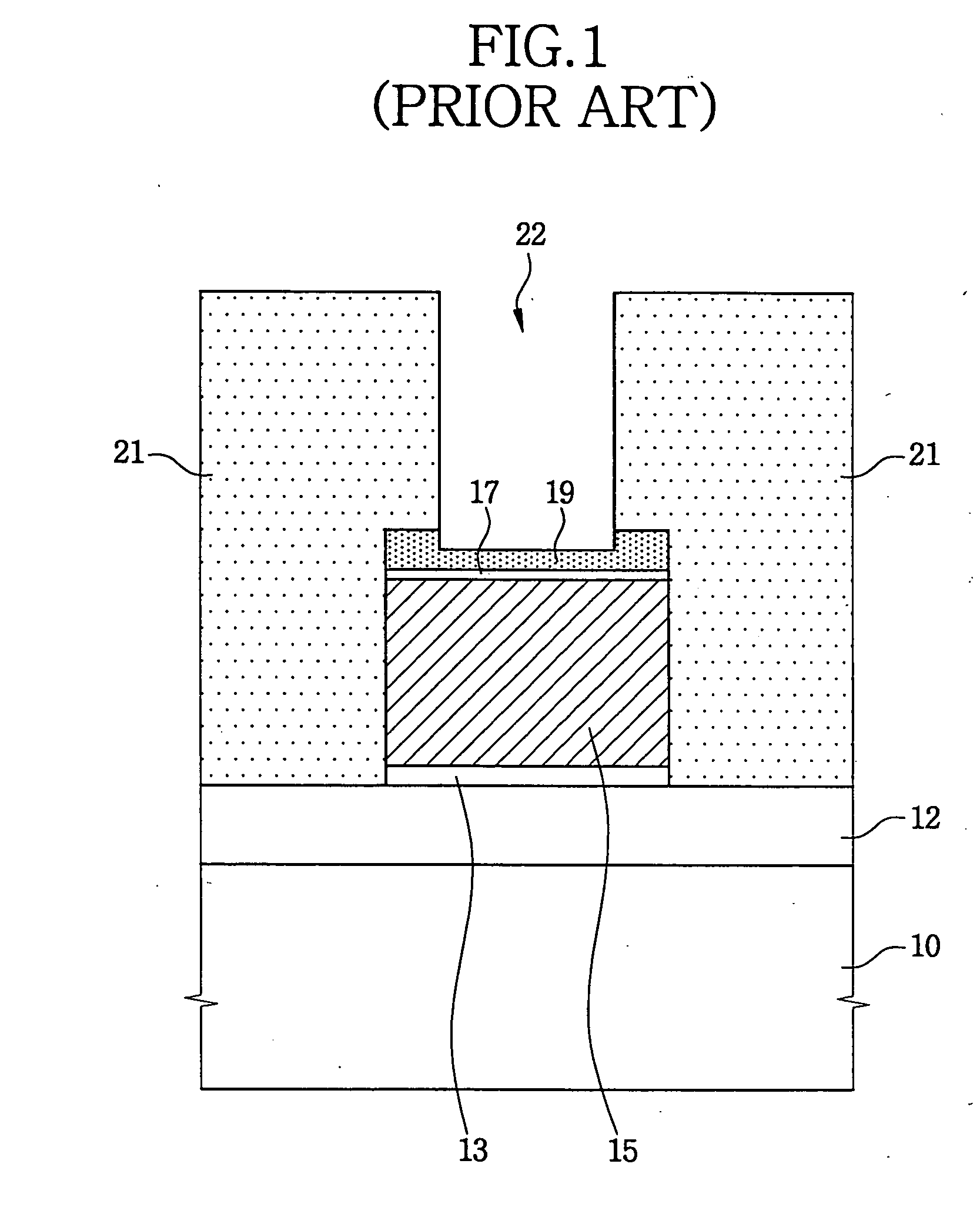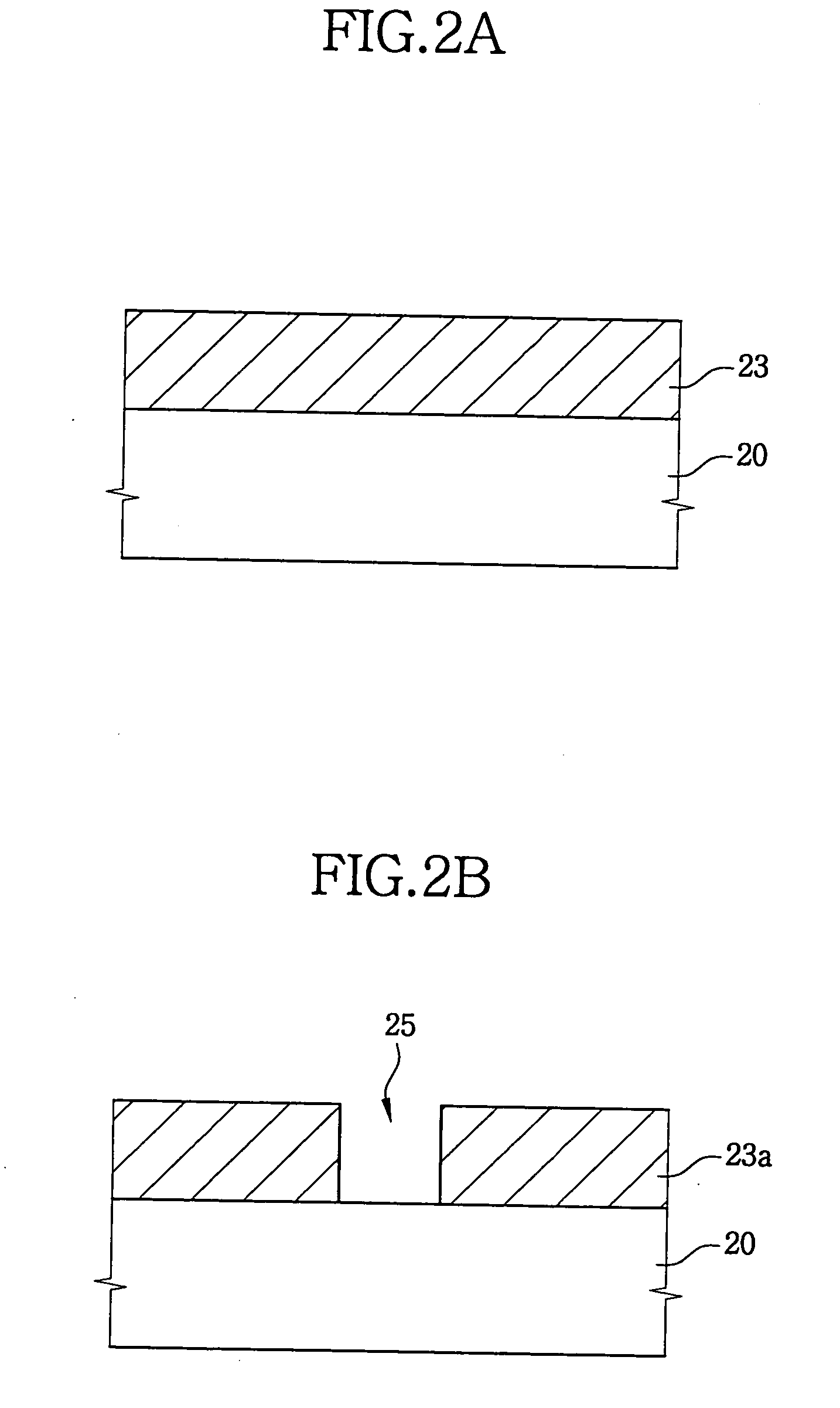Method for forming a wiring of a semiconductor device, method for forming a metal layer of a semiconductor device and apparatus for performing the same
- Summary
- Abstract
- Description
- Claims
- Application Information
AI Technical Summary
Benefits of technology
Problems solved by technology
Method used
Image
Examples
example 1
[0150] A via resistance of a semiconductor device having a Kelvin structure that included a single via formed between lower and upper wirings was shown in FIG. 10.
[0151] A tantalum nitride layer having a thickness of about 300 Å was formed on a substrate by a conventional PVD process. On the contrary, a first tantalum nitride layer having a thickness of about 5 Å was formed on a substrate by an ALD process in accordance with the method of the present invention. A second tantalum nitride layer having a thickness of about 10 Å was formed on a substrate by an ALD process in accordance with the method of the present invention. A third tantalum nitride layer having a thickness of about 15 Å was formed on a substrate by an ALD process in accordance with the method of the present invention. The four substrates had via holes having a diameter of about 0.13 μm, respectively.
[0152] As shown in FIG. 10, the tantalum nitride layers formed by the method of the present invention had thickness t...
example 2
[0153] A characteristic of leakage currents in a semiconductor device having a single damascene comb structure that included a trench filled with wirings was shown in FIG. 11. The wirings had a length of about 3.6 meters, a width of about 0.141 μm and an interval therebetween of about 0.14 mm. In FIG. 11, a lateral axis represented a leakage current and a longitudinal axis represented a cumulative probability.
[0154] A tantalum nitride layer having a thickness of about 300 Å was formed on a substrate by a conventional PVD process, whereas, a tantalum nitride layer having a thickness of about 10 Å was formed on a substrate by an ALD process in accordance with the method of the present invention. In FIG. 11, line a indicates the characteristic of leakage current of the tantalum nitride layer formed by the conventional method. Line b indicates the characteristic of leakage current of the tantalum nitride layer formed by the method of the present invention. As shown in FIG. 11, it could...
example 3
[0155] A via resistance of tantalum nitride barrier layers was shown in FIG. 12. A via plug had a critical dimension of about 0.26 mm and an aspect ratio of about 3.1:1. In FIG. 12, [a]line a indicates a via resistance of a tantalum nitride layer when ((Net2)3Ta=NtBu) was used as a precursor. Line b indicates a via resistance of a tantalum nitride layer when Ta(NC(Ch3)2C2H5)(N(CH3)2)3) was used as a precursor. Aluminum layers were formed on the tantalum nitride barrier layers, respectively.
[0156] As shown in FIG. 12, the via resistance was directly proportional to a thickness of the tantalum nitride barrier layer. It could be noted that the tantalum nitride barrier layer formed using Ta(NC(Ch3)2C2H5)(N(CH3)2)3) as the precursor had a via resistance lower than that formed using ((Net2)3Ta═NtBu) as the precursor.
PUM
| Property | Measurement | Unit |
|---|---|---|
| Temperature | aaaaa | aaaaa |
| Temperature | aaaaa | aaaaa |
| Temperature | aaaaa | aaaaa |
Abstract
Description
Claims
Application Information
 Login to View More
Login to View More - R&D
- Intellectual Property
- Life Sciences
- Materials
- Tech Scout
- Unparalleled Data Quality
- Higher Quality Content
- 60% Fewer Hallucinations
Browse by: Latest US Patents, China's latest patents, Technical Efficacy Thesaurus, Application Domain, Technology Topic, Popular Technical Reports.
© 2025 PatSnap. All rights reserved.Legal|Privacy policy|Modern Slavery Act Transparency Statement|Sitemap|About US| Contact US: help@patsnap.com



